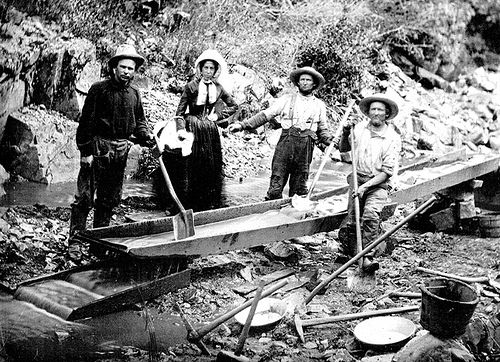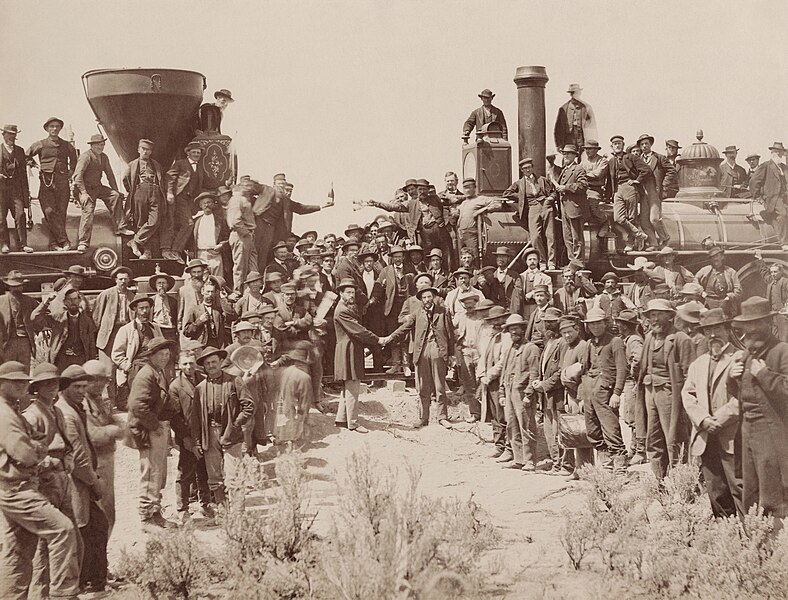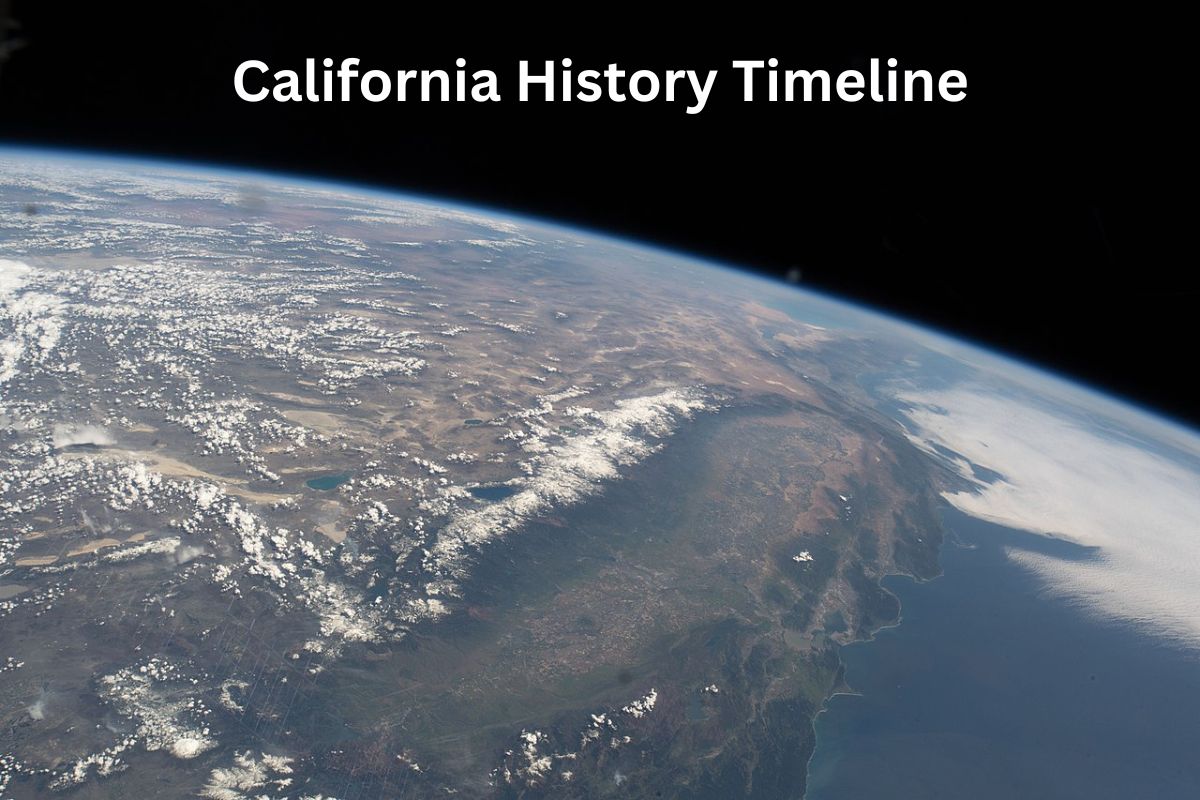California, known as the Golden State, has a rich and vibrant history that spans centuries. From its indigenous roots to Spanish colonization, Mexican rule, and eventual statehood within the United States, California’s history is filled with significant events that have shaped its identity.
This coastal state on the western edge of the United States has been at the forefront of social, cultural, and technological advancements, experiencing boom periods such as the Gold Rush and facing challenges like devastating earthquakes and social unrest.
Understanding the timeline of California’s history provides insights into the diverse factors that have contributed to its development and influenced the state’s present-day character.
Let’s embark on a journey through time to explore the key events that have shaped the fascinating story of California.
| Year | Event |
|---|---|
| 1542 | Spanish explorer Juan Rodríguez Cabrillo explores the coast of California. |
| 1769 | Gaspar de Portolà establishes the first Spanish mission in California, Mission San Diego de Alcalá. |
| 1821 | California becomes part of Mexican territory after Mexico gains independence from Spain. |
| 1848 | The Treaty of Guadalupe Hidalgo is signed, ceding California to the United States after the Mexican-American War. |
| 1849 | The California Gold Rush begins after gold is discovered at Sutter’s Mill. |
| 1850 | California is admitted as the 31st state of the United States. |
| 1869 | The First Transcontinental Railroad is completed, connecting California to the eastern states. |
| 1906 | The devastating San Francisco earthquake and fire occur. |
| 1913 | The Los Angeles Aqueduct is completed, bringing water to Los Angeles. |
| 1935 | The Golden Gate Bridge in San Francisco is completed. |
| 1942 | Japanese-Americans are forcibly relocated and interned in camps during World War II. |
| 1955 | Disneyland, the first modern theme park, opens in Anaheim. |
| 1965 | The Watts Riots occur in Los Angeles, highlighting racial tensions. |
| 1969 | The Stonewall Riots in New York City influence LGBTQ+ activism in California. |
| 1989 | The Loma Prieta earthquake strikes the San Francisco Bay Area. |
| 2000 | Rolling blackouts hit California during an energy crisis. |
| 2008 | Proposition 8, banning same-sex marriage, is passed and later overturned. |
| 2020 | The COVID-19 pandemic impacts California, leading to lockdowns and economic challenges. |
Timeline of California’s History
1542 – Juan Rodríguez Cabrillo explores the coast of California
In 1542, Juan Rodríguez Cabrillo, a Portuguese explorer sailing under the Spanish flag, embarked on an expedition to explore the western coast of North America. Cabrillo’s exploration extended from present-day Mexico to as far north as Oregon.
He explored various regions along the California coast, making contact with indigenous populations and documenting his observations. Cabrillo’s journey played a significant role in the European exploration and eventual colonization of California.

1769 – Gaspar de Portolà establishes the first Spanish mission in California, Mission San Diego de Alcalá
In 1769, Gaspar de Portolà, a Spanish military officer, led an expedition to establish a series of missions and presidios in Alta California, as the region was then known. The first mission, Mission San Diego de Alcalá, was founded in present-day San Diego.
The mission system aimed to spread Christianity among the indigenous population and solidify Spanish presence in the area. Over time, the missions played a crucial role in shaping California’s cultural, religious, and agricultural landscapes.
1821 – California becomes part of Mexican territory after Mexico gains independence from Spain
In 1821, Mexico successfully gained independence from Spanish colonial rule. As a result, California, along with other Spanish territories in North America, became part of the newly formed Mexican territory.
Mexican rule in California introduced changes to governance, land distribution, and cultural dynamics. The influence of Mexican culture, language, and traditions left a lasting impact on California’s identity.
1848 – The Treaty of Guadalupe Hidalgo is signed, ceding California to the United States after the Mexican-American War
The Treaty of Guadalupe Hidalgo, signed in 1848, marked the end of the Mexican-American War. The treaty stipulated that Mexico would cede a significant portion of its territory to the United States, including California.
With the discovery of gold in California just a few days before the treaty’s signing, the region became even more valuable to the United States. The gold rush and subsequent influx of settlers from around the world transformed California’s demographics and economy.

1849 – The California Gold Rush begins after gold is discovered at Sutter’s Mill
In 1848, gold was discovered by James W. Marshall at Sutter’s Mill, located in Coloma, California. News of the gold discovery spread rapidly, triggering a massive influx of people to California in search of fortune.
The ensuing California Gold Rush, which lasted throughout the 1850s, had a profound impact on California’s population, economy, and infrastructure.
Towns and cities sprang up, and industries such as mining, agriculture, and transportation expanded rapidly, shaping the future development of the state.
1850 – California is admitted as the 31st state of the United States
On September 9, 1850, California was admitted to the United States as the 31st state. This followed a period of rapid population growth and development spurred by the Gold Rush.
California’s admission played a significant role in shaping national politics, as it disrupted the balance of free and slave states in Congress. California’s rapid rise and cultural diversity contributed to its unique identity within the United States.
1869 – The First Transcontinental Railroad is completed, connecting California to the eastern states
In 1869, the First Transcontinental Railroad was completed when the Central Pacific Railroad from California and the Union Pacific Railroad from the east met at Promontory Summit, Utah.
This monumental engineering feat connected California to the eastern states, significantly reducing travel time and facilitating the transportation of people, goods, and ideas.
The completion of the railroad had a profound impact on California’s economy, enabling rapid growth and development in the state. It further solidified California’s importance as a link between the East Coast and the Pacific.

1906 – The devastating San Francisco earthquake and fire occur
On April 18, 1906, a catastrophic earthquake struck San Francisco, followed by a destructive fire that raged for several days. The earthquake, estimated to be around magnitude 7.8, caused widespread damage to buildings, infrastructure, and communities.
The subsequent fires exacerbated the destruction, resulting in the displacement of thousands of residents and the loss of numerous lives.
The disaster prompted significant efforts to rebuild the city and led to advancements in earthquake-resistant building practices and the establishment of better disaster preparedness measures.
1913 – The Los Angeles Aqueduct is completed, bringing water to Los Angeles
In 1913, the Los Angeles Aqueduct was completed, providing a vital water supply to the rapidly growing city of Los Angeles.
The aqueduct, designed by engineer William Mulholland, transported water from the Owens Valley in the eastern Sierra Nevada Mountains to meet the increasing demands of Los Angeles’ expanding population and agricultural needs.
The completion of the aqueduct played a crucial role in the development of Southern California, facilitating urban growth, agricultural productivity, and economic prosperity.
1935 – The Golden Gate Bridge in San Francisco is completed
The construction of the Golden Gate Bridge began in 1933 and was completed in 1937. The iconic suspension bridge spans the Golden Gate Strait, connecting San Francisco to Marin County.
The construction of the bridge was a significant engineering achievement and a symbol of progress during the Great Depression. The Golden Gate Bridge has since become an internationally recognized landmark and a testament to human ingenuity and architectural beauty.
1942 – Japanese-Americans are forcibly relocated and interned in camps during World War II
Following the Japanese attack on Pearl Harbor in December 1941, the United States government implemented policies that led to the forced relocation and internment of Japanese-Americans living on the West Coast, including California.
Under Executive Order 9066, approximately 120,000 Japanese-Americans, two-thirds of whom were U.S. citizens, were forcibly removed from their homes and sent to internment camps in remote locations.
This discriminatory act was fueled by wartime fears, racism, and unfounded suspicions of disloyalty. The internment camps had a lasting impact on affected individuals and families, representing a dark chapter in American history and a violation of civil liberties.
1965 – The Watts Riots occur in Los Angeles, highlighting racial tensions
In August 1965, the Watts Riots erupted in the Watts neighborhood of Los Angeles, sparked by an incident involving the arrest of an African-American motorist by the police.
The six days of civil unrest and rioting that followed exposed long-standing racial tensions and socioeconomic inequalities in the city. The riots resulted in extensive property damage, injuries, and loss of life.
The event served as a wake-up call, leading to increased efforts to address systemic racism, improve community relations, and promote social and economic equality. The Watts Riots became a catalyst for civil rights activism and urban renewal initiatives in Los Angeles.
1969 – The Stonewall Riots in New York City influence LGBTQ+ activism in California
In June 1969, the Stonewall Riots took place in New York City’s Greenwich Village, marking a turning point in the LGBTQ+ rights movement. The uprising was a response to police raids targeting LGBTQ+ establishments and the ongoing discrimination faced by the community.
The impact of the Stonewall Riots reverberated across the United States, including California, and galvanized the LGBTQ+ community to fight for their rights.
In California, LGBTQ+ activists organized protests, marches, and advocacy efforts, leading to significant advancements in LGBTQ+ rights and acceptance over the following decades.
1989 – The Loma Prieta earthquake strikes the San Francisco Bay Area
On October 17, 1989, a major earthquake with a magnitude of 6.9 struck the San Francisco Bay Area. The Loma Prieta earthquake, named after the nearby Loma Prieta peak, caused widespread damage across the region.
The collapse of a section of the Cypress Street Viaduct in Oakland and a portion of the Bay Bridge were among the notable impacts. The earthquake resulted in 63 deaths and thousands of injuries.
The event highlighted the importance of seismic safety measures and prompted efforts to strengthen infrastructure and emergency response systems in earthquake-prone areas of California.
2000 – Rolling blackouts hit California during an energy crisis
In 2000 and 2001, California faced an energy crisis characterized by rolling blackouts and skyrocketing electricity prices. The crisis was primarily caused by a combination of market manipulation, deregulation issues, and an electricity supply shortage.
The rolling blackouts, which impacted millions of Californians, led to disruptions in daily life, economic challenges, and debates about the state’s energy policies.
The crisis prompted reforms in energy regulation and increased investment in renewable energy sources to ensure a more stable and sustainable energy future.
2008 – Proposition 8, banning same-sex marriage, is passed and later overturned
In November 2008, California voters approved Proposition 8, a ballot initiative that added a ban on same-sex marriage to the state’s constitution. The passage of Proposition 8 was a setback for LGBTQ+ rights, as it limited the recognition of same-sex marriages.
However, the decision sparked a legal and political battle. In 2013, the United States Supreme Court ruled that Proposition 8 was unconstitutional, allowing same-sex marriages to resume in California. The case played a pivotal role in the nationwide fight for marriage equality.
2020 – The COVID-19 pandemic impacts California, leading to lockdowns and economic challenges
In early 2020, the global COVID-19 pandemic reached California, causing significant disruptions and challenges. To mitigate the spread of the virus, the state implemented lockdown measures, including stay-at-home orders, business closures, and restrictions on public gatherings.
The pandemic had far-reaching impacts on public health, the economy, and daily life in California. It led to a surge in unemployment, strained healthcare systems, and prompted widespread efforts to develop and distribute vaccines to protect the population.
The pandemic also highlighted social and economic disparities and spurred innovations in remote work and distance learning.
Ongoing events – Environmental challenges and wildfires in California.
California faces ongoing environmental challenges, including droughts and wildfires. The state experiences periodic drought cycles, which have implications for water resources, agriculture, and ecosystems. Water management and conservation efforts are crucial to ensure a sustainable future.
Additionally, California is prone to devastating wildfires, often exacerbated by dry conditions and strong winds. These wildfires have caused significant loss of life, property damage, and environmental degradation. Efforts to mitigate the impact of wildfires, address climate change, and promote sustainable land management practices remain ongoing priorities in the state.
